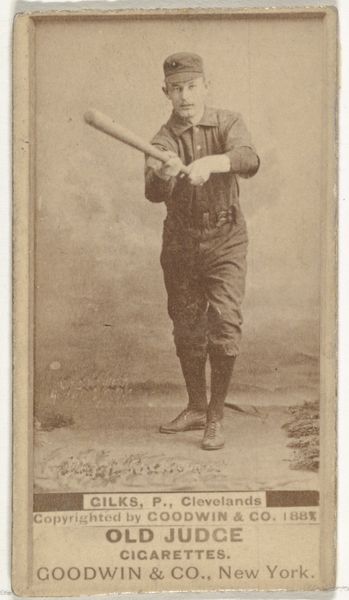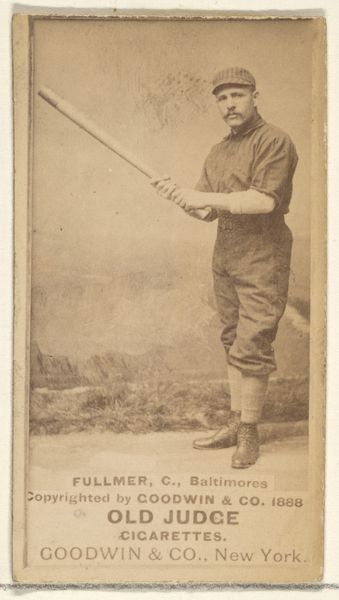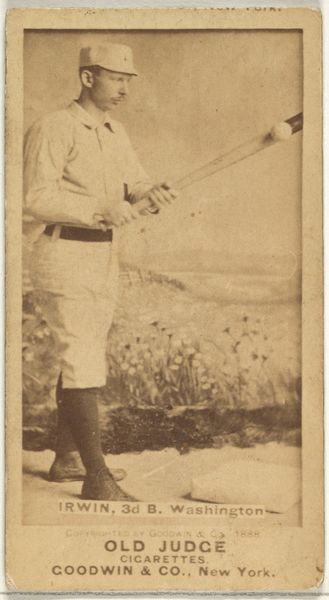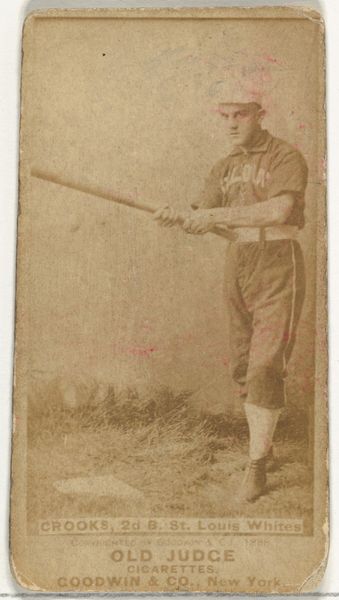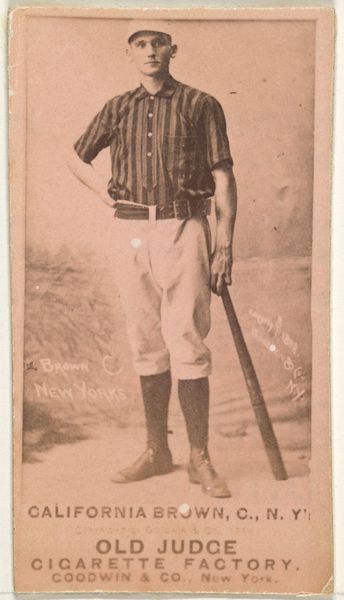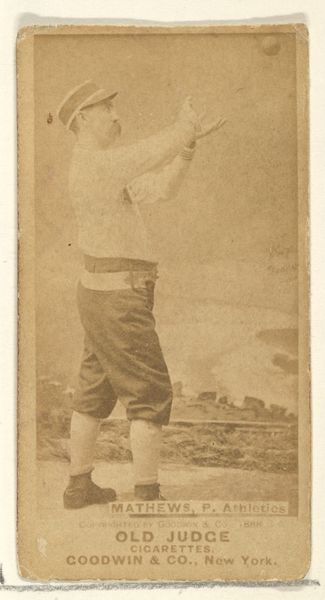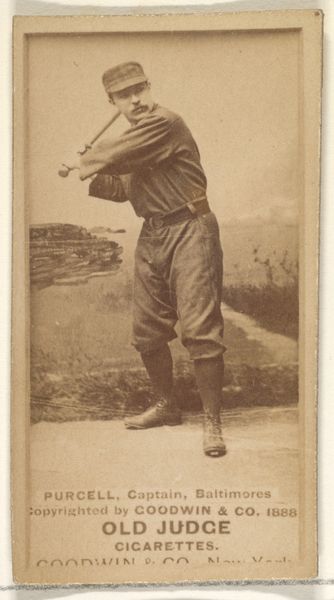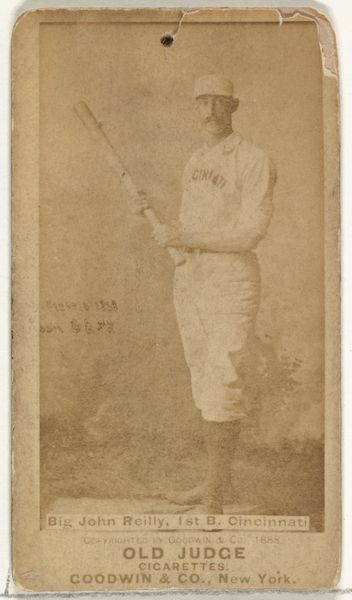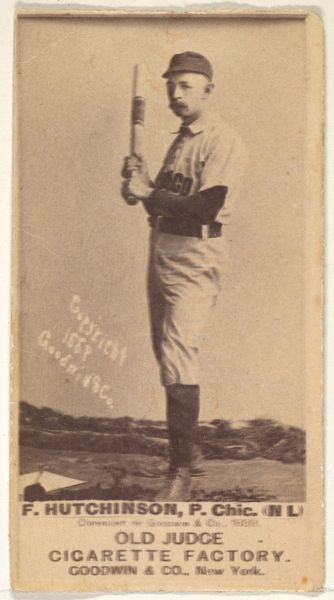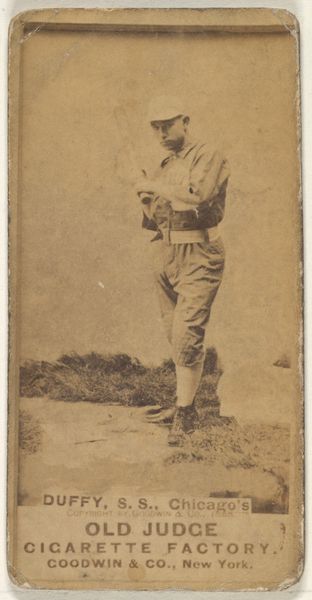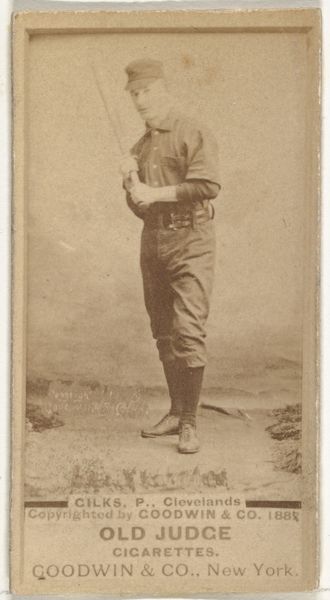
Mattimore, Pitcher, Philadelphia Athletics, from the Old Judge series (N172) for Old Judge Cigarettes 1888
0:00
0:00
drawing, print, photography
#
portrait
#
drawing
#
pictorialism
# print
#
photography
#
genre-painting
Dimensions: sheet: 2 11/16 x 1 3/8 in. (6.9 x 3.5 cm)
Copyright: Public Domain
Editor: This is a photographic print from 1888, titled "Mattimore, Pitcher, Philadelphia Athletics," part of the Old Judge Cigarettes series, by Goodwin & Company. I find the sepia tone and the subject matter create an intriguing intersection of sport and commercialism. What do you see in this piece? Curator: Well, beyond its aesthetic qualities, it's a powerful example of how the burgeoning advertising industry in the late 19th century began to intersect with popular culture. Think about it: a cigarette company using baseball players to market their product. It’s about leveraging celebrity and aspiration to sell commodities, embedding consumerism within leisure activities. How do you think this card would have been received at the time? Editor: I imagine it was quite popular, maybe even collectible. It democratized access to sports figures, making them visible to a wider public. Sort of like modern-day trading cards? Curator: Precisely, though it highlights a fascinating and complicated dynamic. This image serves as a cultural artifact revealing the evolving role of athletes, advertising, and consumer culture. Consider the implications: the romanticism of the player and its links to the marketing of an unhealthy product. How does that impact the image's reception now, compared to its initial context? Editor: It certainly complicates things. Knowing what we do now about the health impacts of smoking, it's hard to ignore that aspect when viewing it. The image is both nostalgic and problematic. Curator: Exactly. The image allows a critical look at how corporations use endorsements and popular figures, raising questions about ethics in the context of product marketing and cultural influence. I think what really captures my eye here is the seamless blend of art, commerce, and athleticism. Editor: I'm so glad we explored that blend, and this work is a reminder that context shapes our interpretations. Thanks for your insights. Curator: My pleasure! It's vital to consider the historical circumstances, how museums display this and socio-political environment influence a work's impact.
Comments
No comments
Be the first to comment and join the conversation on the ultimate creative platform.
